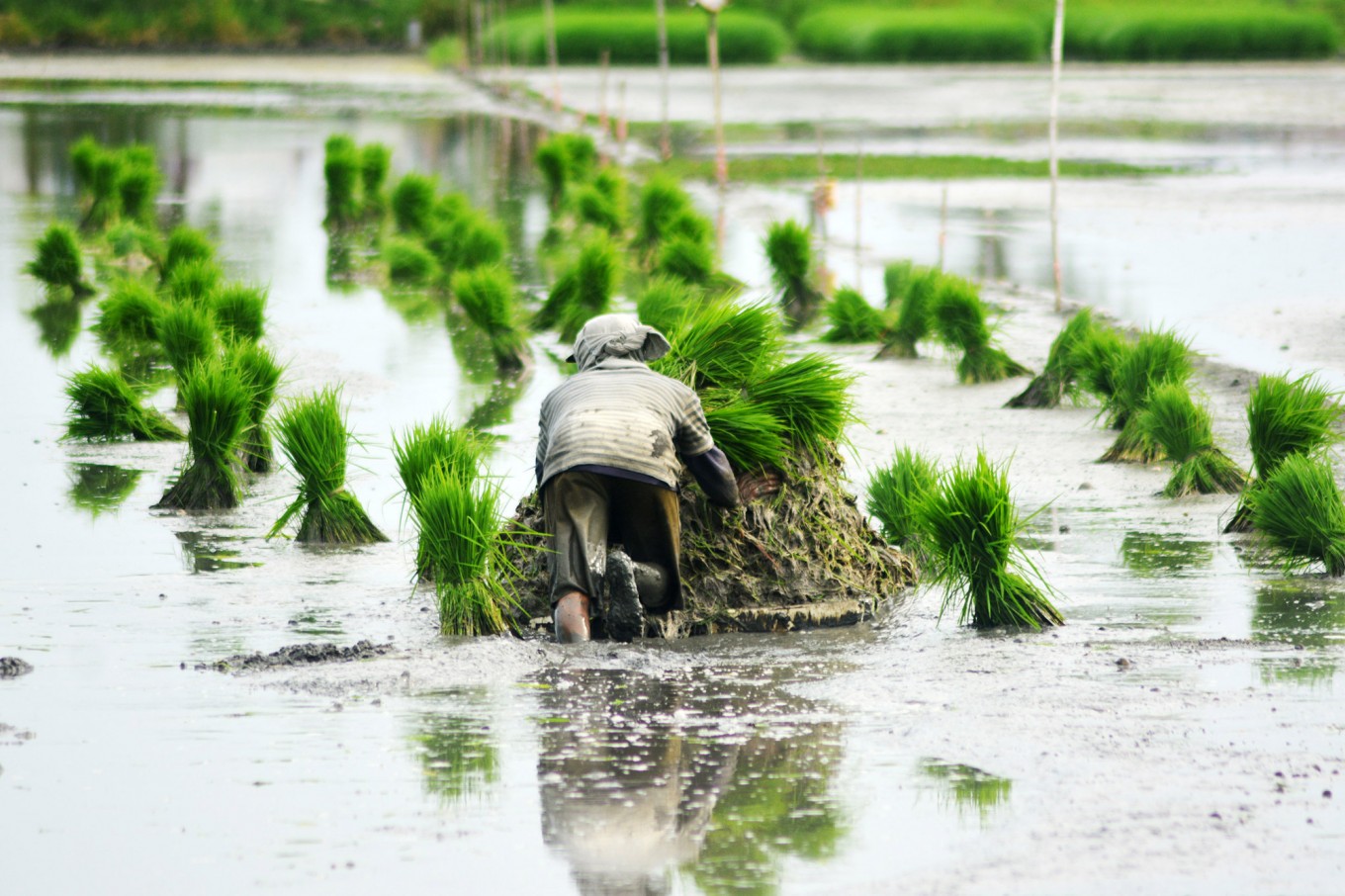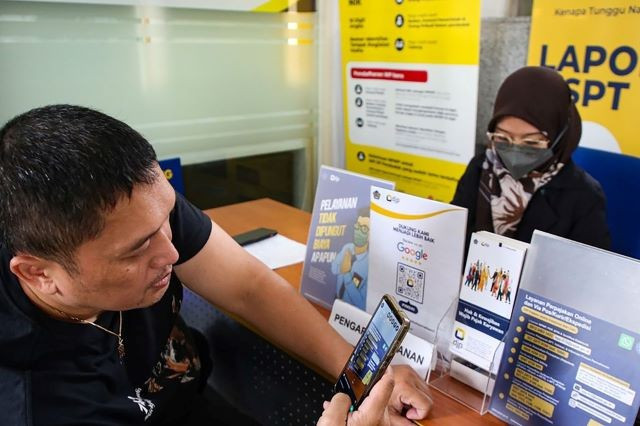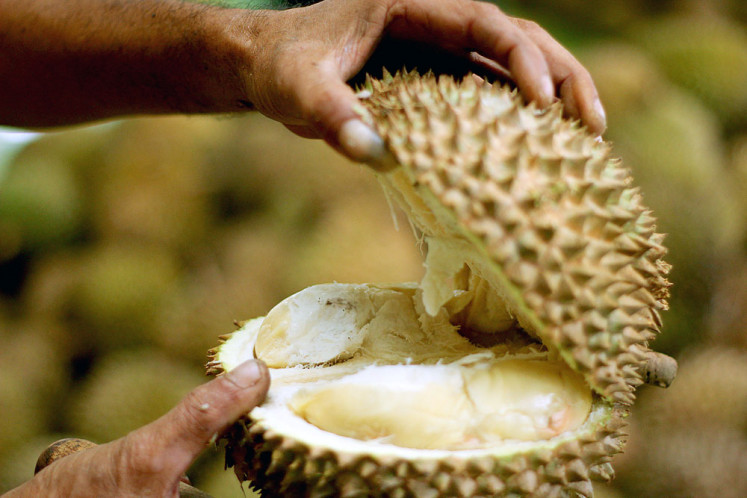Popular Reads
Top Results
Can't find what you're looking for?
View all search resultsPopular Reads
Top Results
Can't find what you're looking for?
View all search resultsGetting ready to tackle 'superbugs' on farms, food
Human deaths caused by infections of “superbugs”, or drug-resistant bacteria, are increasing. And, the superbugs themselves are a nightmare for medical staff as they are notoriously difficult to treat.
Change text size
Gift Premium Articles
to Anyone
H
uman deaths caused by infections of “superbugs”, or drug-resistant bacteria, are increasing. And, the superbugs themselves are a nightmare for medical staff as they are notoriously difficult to treat.
Importantly, while the misuse and overuse of antibiotics in human healthcare have stoked fears, another issue not highlighted enough in the conversation on antimicrobial resistance (AMR) is whether the way we produce our food and manage our farms contributes to AMR.
Put simply, food and farms are alternative routes through which the “superbugs” spread. Over the past 50 years, food production methods have been intensified — in response to population and economic growth. As a result, the use of antimicrobial drugs in agriculture has been steadily increasing.
Antimicrobials are undeniably important in treating diseases of farm animals and plants, but their misuse puts us at great risk, as in many cases they are used in healthy animals for promoting animal growth and preventing disease outbreaks.
The Food and Agriculture Organization (FAO) of the United Nations estimates that about 60,000 tons of antimicrobials are used in livestock each year. With the growing demand for animal products, global use is projected to rise by 67 percent by 2030 to 106,000 tons.
Antibiotics are also being used in aquaculture — fish farms — and in crop production, leaving residues of these drugs to be found in water, soil and plants (albeit to a lesser degree).
As flagged by UN Secretary-General Ban Ki-moon: “The spread of antibiotic-resistant infections from live farm animals to meat and people has been documented.” This is a major concern.
Despite the serious threat posed by AMR, unfortunately, there are insufficient data from countries on the level of antimicrobial use (AMU) and AMR related to animals and their products. Much improved surveillance systems are urgently required to address this deficit before this global threat intensifies.
This is where FAO, the World Health Organization (WHO) and the World Organization for Animal Health (OIE) joined forces in a Tripartite partnership that elaborated a Global Action Plan on AMR that can be used as a blueprint for countries to develop their national action plans. During the much applauded 71st United Nations General Assembly (UNGA) on Sept. 21, 2016, global leaders reaffirmed their commitment to developing such national action plans.
By mid-2017, governments must already have put in place national strategies for tackling AMR and AMU in their food and agricultural sectors. FAO has pledged to assist countries in fulfilling this goal, and will encourage governments in doing so to adopt a “One Health” approach that involves public health and veterinary authorities, the food and agriculture sectors, environmental specialists, financial planners, and consumers.
Agriculture is one of the key sectors of the Indonesian economy and collaborative actions are indeed crucial. Based on livestock intensification patterns, Indonesia is already among future hotspots for AMR, along with Myanmar, Nigeria, Peru and Vietnam, as noted by veterinary epidemiologist and food safety expert Delia Grace in the Review of Evidence on AMR and Animal Agriculture in Developing Countries, published by the International Livestock Research Institute (ILRI).
Also, based on aquaculture growth projections, Indonesia is again a future hotspot, along with Thailand, Vietnam, Bangladesh, India and Chile. This should serve as an early warning for Indonesia to pay attention to AMR in the aquaculture sector too.
So, what’s on Indonesia’s checklist? In addressing AMR in food and agriculture, efforts should be focused on four key areas: awareness; evidence; governance; and practices — as proposed in the FAO Action Plan on AMR for 2016-2020, and as aligned with the Global Action Plan.
This means improving awareness of AMR; building national capacities for surveillance and monitoring of AMR and AMU; strengthening governance related to AMR and AMU; and promoting good practices in food and agricultural systems and the prudent use of antimicrobials.
On the farm, prevention is the key, so animals do not get sick and need antibiotics in the first place.
Best practices for hygiene, biosecurity and animal health care and husbandry therefore need to be implemented.
This includes observing the “withdrawal period” — the time needed for animals to eliminate antibiotics from their bodies after treatment and so avoid residues in meat. Indonesia already has shown a positive trend to limit the low-dose use of antimicrobial drugs to promote the growth of livestock.
FAO is currently working in close collaboration with the Agriculture Ministry in the finalization of the AMR Road Map and the National Action Plan for AMR Control.
A decree establishing the AMR Control Committee (KPRA) based at the Ministry of Agriculture is also on its way. Once established, the Agriculture Ministry-based KPRA will collaborate on AMR control activities with the KPRA based at the Health Ministry.
A Minister of Agriculture Regulation (Permentan) on AMR Control is also being prepared, along with guidelines for monitoring and surveillance for AMR and AMU.
Yes, there is still a long way to go. But with strong international cooperation and solid multi-sectoral collaboration at the national level, Indonesia is set to be on the right track in combating “superbugs”.
Indonesian farmers and producers, veterinary professionals and authorities, policymakers, and food consumers are all responsible for curbing the threat.
As José Graziano da Silva, director-general of FAO, puts it, “agriculture must shoulder its share of responsibility […].”
***
The writer is a veterinarian with extensive experience in managing animal health programs in developing countries. Currently he is the team leader of the FAO Emergency Center for Transboundary Animal Diseases (ECTAD) Program in Indonesia supporting the Indonesian Ministry of Agriculture in the control of zoonotic and emerging infectious diseases.
---------------
We are looking for information, opinions, and in-depth analysis from experts or scholars in a variety of fields. We choose articles based on facts or opinions about general news, as well as quality analysis and commentary about Indonesia or international events. Send your piece to community@jakpost.com. For more information click here.










